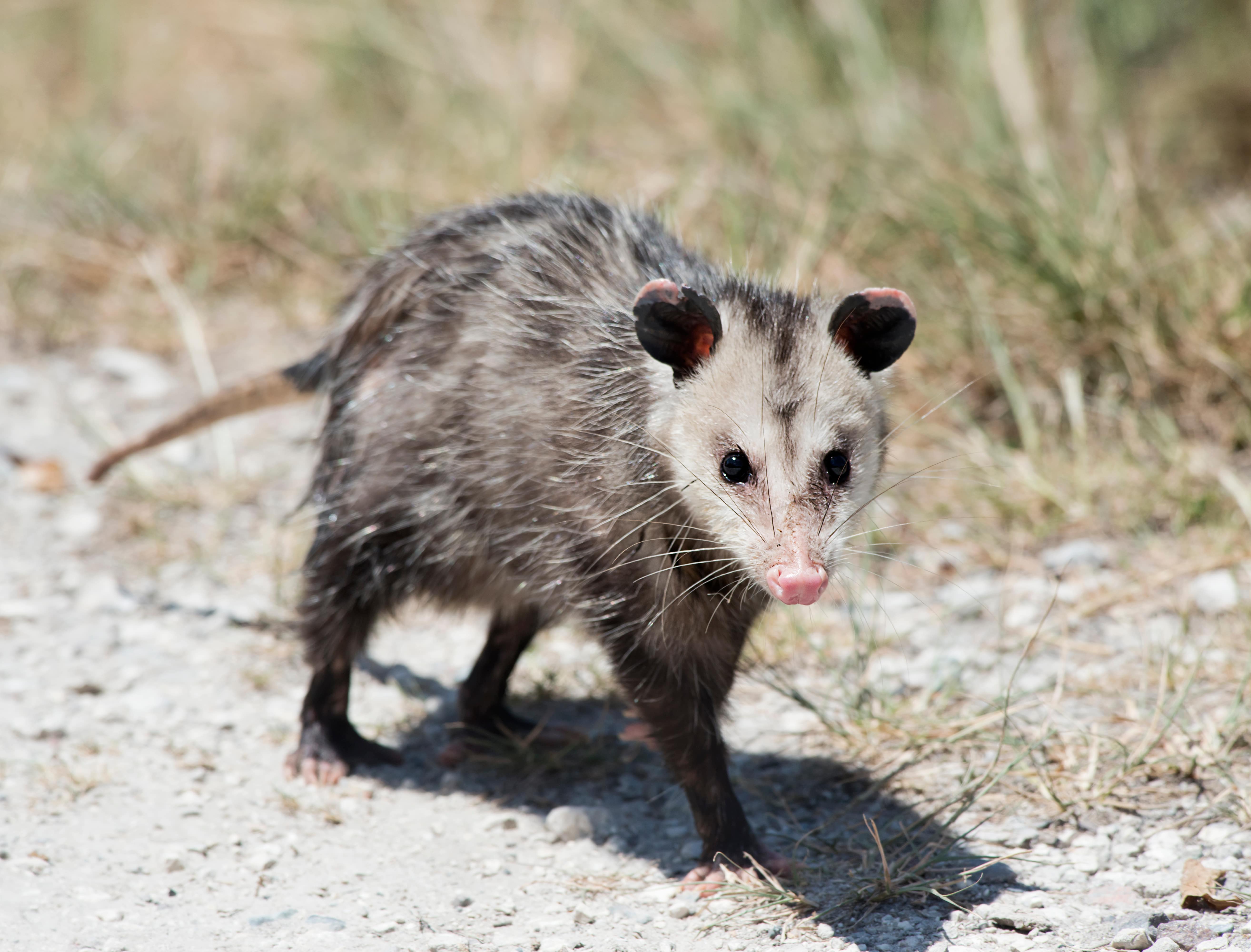Are you seeing strange tracks in the mud, snow or fine soil around your property? If they look to have 5 toes and a strange pattern, they may be opossum tracks.

Opossum tracks are easily recognizable. Each foot has five toes and their opposable thumb makes for a unique print that resembles a human thumb. If an opossum is on your property you will likely see tracks along deck railings, downspouts, trees and other structures. Opossums will use these areas to gain entry to your home or find food. While they prefer to scurry around the ground, they are also great climbers. They will often climb up walls or onto ledges looking for food. Their footprints will often overlap or be close together as they tend to walk in a shuffling motion. Another way to identify if a footprint belongs to an opossum is through the feces left behind. Let’s take a close look at images with identifying features of opossum tracks and possum droppings.
Opossum Tracks
Opossums walk on all fours and have five toes on each foot. Prints will be about 2 inches in diameter, with back feet being slightly larger. You may also see drag marks in opossum tracks as their long tail often drags behind them on the ground. Since their thumb is opposable, you will notice it’s more separated than the other four toes on the print. Hind feet will resemble a child’s handprint.
Possum Tracks Compared to Raccoon Tracks
An opossum track can be confused with a raccoon’s. Both opossums and raccoons leave tracks made by four feet with five toes each, but there are some subtle differences that can help you make the distinction. Raccoon toes or claws are longer, closer together than an opossum, and all toes face forward. In addition, the pattern they leave behind will differ. Raccoons walk in a particular way where each back-foot lands next to the opposite right foot. And, they tend to walk flat footed leaving perfect imprints on the ground. This creates a unique pattern that can help you identify whether you’re seeing opossum tracks or evidence of a raccoon lurking around.
Opossum Droppings
Opossums will defecate in protected leafy areas or near trails they use. Feces will change shape and size depending on the opossum’s diet. Their diet is quite broad ranging from fruit and insects, to small animals, trash and even roadkill. Sometimes, opossum poop may closely resemble droppings from a cat or small dog. Droppings are often pointed at the end and are about 1 to 3 inches long.
If you suspect an opossum is on your property, contact a wildlife professional. Opossums can carry pathogens that can cause diseases, such as toxoplasmosis, coccidiosis, trichomoniasis, and Chagas disease. In addition, they are often infested with parasites like fleas, ticks, lice and mites.
The best way for you or your pets to avoid coming into contact with an opossum or its droppings is to allow a professional to help remove them from your property. Contact Terminix® today to schedule a free inspection with a wildlife technician.



